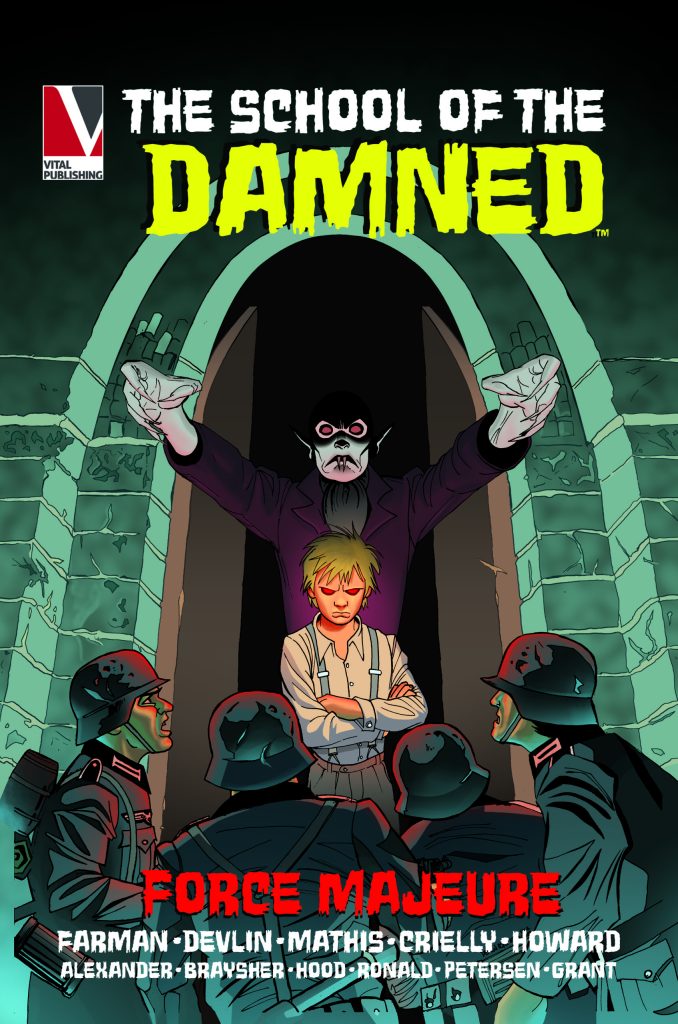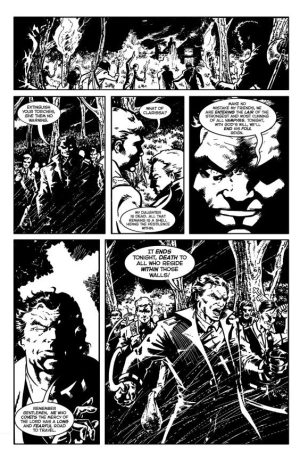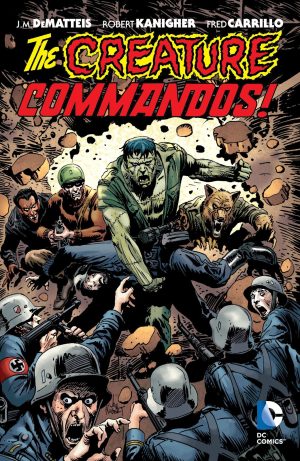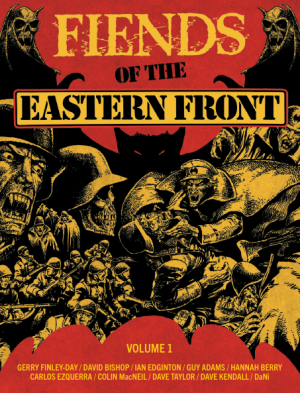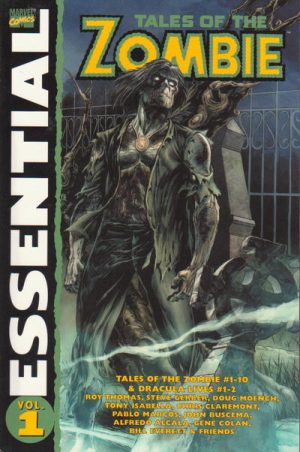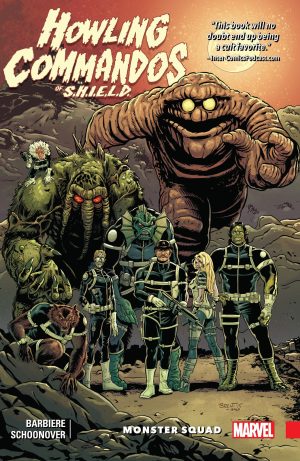Review by Jamie McNeil
The School of the Damned: Force Majeure is set in 1936 before World War Two, featuring a cast drawn predominantly from cinematic and literary horror sources both classic and modern. On the edges of the wilderness, Count Orlok (Nosferatu) runs a school serving as a refuge for monsters ostracised by society, among whom are Madusa, Dr Victor Frankenstein, and his “daughter” Jenny. When a squad of Nazi soldiers arrives looking for one of their associates, their peace and survival is threatened.
While gathering all the monsters into a the same story isn’t new, the concept works because writer John Farman serves up a tribute to the black and white horror comics of the 1960s to 1980s in an entertaining Monsters vs Nazis pastiche. While the tropes are familiar, Farman inserts enough originality by subverting ideas, bulking the back story for his interpretations, and squeezing inspiration from sources as diverse as Lon Chaney’s The Wolfman, post-modern vampire tales, Greek mythology, and biblical deities. The plot moves steadily if not smoothly, as a few problems prevent it fully realising its potential.
Some plot devices are confusing. Why are they in a school? How did they met? And exactly why are the Nazis are looking for one of the faculty? Story shifts are even more difficult to follow due to the inconsistent black and white artwork. James Devlin sets the opening tone with a well-rendered and expressive cast, the monsters impressive but with the younger cast looking like actors from modern horror films, which jars against the classic beasties like Orlok. Of the eight featured illustrators, Jason Mathis is the most consistent, contributing three chapters of clean lines, polished artwork, and dark tones. John Howard contributes two chapters but while his work is detailed and open, his cast is posed and expressionless. Thomas Crielly (sample art) shares a chapter with Howard, and Crielly’s grittier and smudged approach works best in evoking creepy old-school horror vibes.
The art produced by David Alexander, David Braysher, and Neil Hood for the appendices all work for the respective stories they illustrate, but stand better alone, clashing wildly with the main chapters. Simon Petersen’s art for ‘Franken-Jenny’ suffers the same fate, his caricatures are good, but not consistent with how the cast is drawn elsewhere.
The diverse styles affect the book, the layout of the chapters, and intersecting back stories hindering rather than helping. Some artists are better than others here but one element where they almost all disappoint is in representing the female cast, only Braysher and Crielly passing the test. From an indie comics perspective, the artistic choices can be understood, but after the opening chapter only four or five characters are reliably recognisable, with the Nazis all similar while the rest of the cast frequently change appearance, which is confuses and distracts.
Despite the disappointing artistic problems, The School of the Damned has the kind of interesting premise that attracts attention from media companies. Farman infuses the story with enough originality to set it apart, keeping the mood tense with the air of threat. His cast is well rounded with potential for more tales explored in spin-offs Tales of the Damned and Frankenjenny. Ultimately, it’s for a lack of consistent art that the book stumbles and not for a lack of ambitious storytelling vision on Farman’s part.
The School of the Damned: Force Majeure is only available through Vital Publishing’s website.
